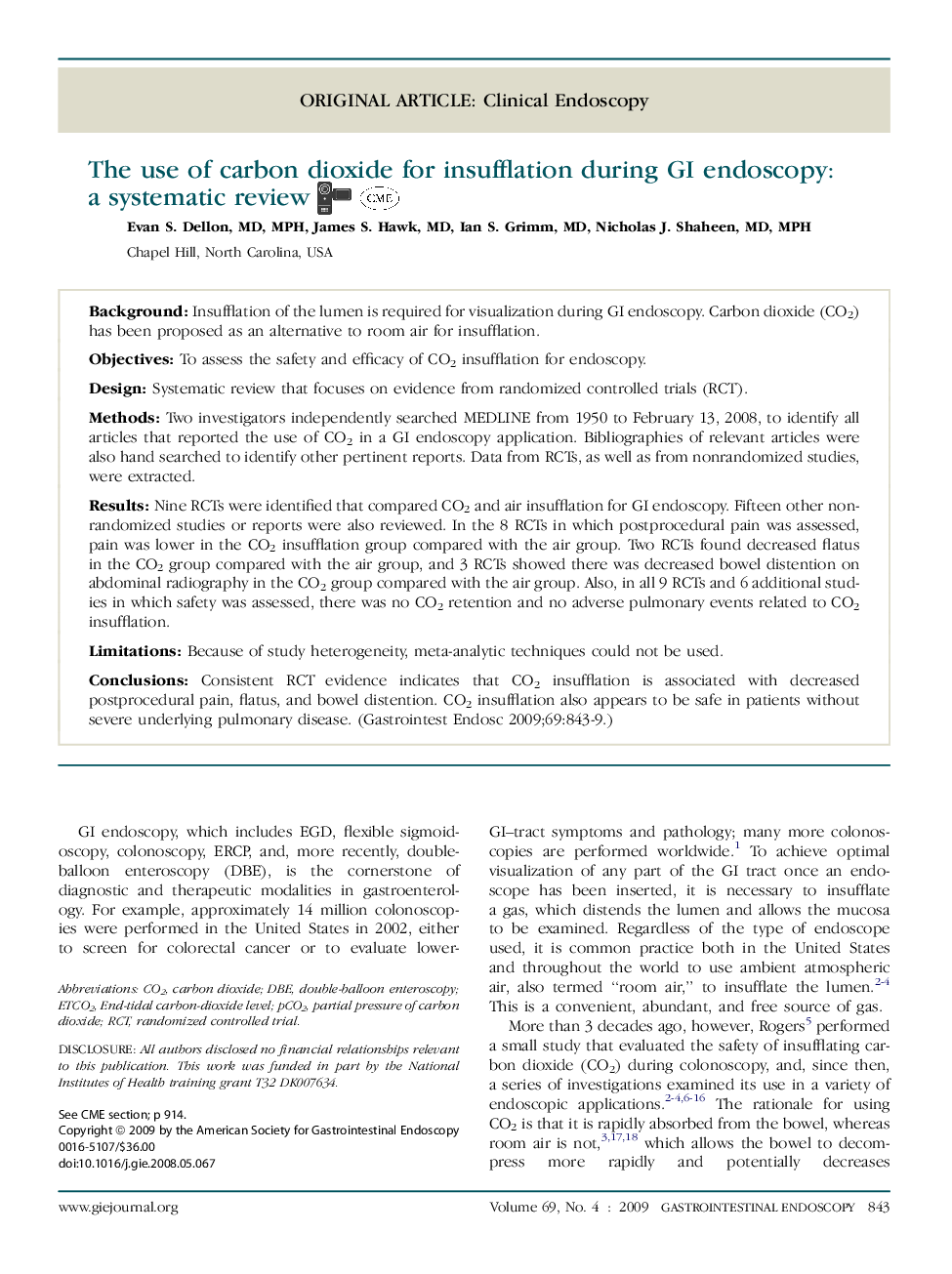| Article ID | Journal | Published Year | Pages | File Type |
|---|---|---|---|---|
| 3306520 | Gastrointestinal Endoscopy | 2009 | 7 Pages |
BackgroundInsufflation of the lumen is required for visualization during GI endoscopy. Carbon dioxide (CO2) has been proposed as an alternative to room air for insufflation.ObjectivesTo assess the safety and efficacy of CO2 insufflation for endoscopy.DesignSystematic review that focuses on evidence from randomized controlled trials (RCT).MethodsTwo investigators independently searched MEDLINE from 1950 to February 13, 2008, to identify all articles that reported the use of CO2 in a GI endoscopy application. Bibliographies of relevant articles were also hand searched to identify other pertinent reports. Data from RCTs, as well as from nonrandomized studies, were extracted.ResultsNine RCTs were identified that compared CO2 and air insufflation for GI endoscopy. Fifteen other nonrandomized studies or reports were also reviewed. In the 8 RCTs in which postprocedural pain was assessed, pain was lower in the CO2 insufflation group compared with the air group. Two RCTs found decreased flatus in the CO2 group compared with the air group, and 3 RCTs showed there was decreased bowel distention on abdominal radiography in the CO2 group compared with the air group. Also, in all 9 RCTs and 6 additional studies in which safety was assessed, there was no CO2 retention and no adverse pulmonary events related to CO2 insufflation.LimitationsBecause of study heterogeneity, meta-analytic techniques could not be used.ConclusionsConsistent RCT evidence indicates that CO2 insufflation is associated with decreased postprocedural pain, flatus, and bowel distention. CO2 insufflation also appears to be safe in patients without severe underlying pulmonary disease.
